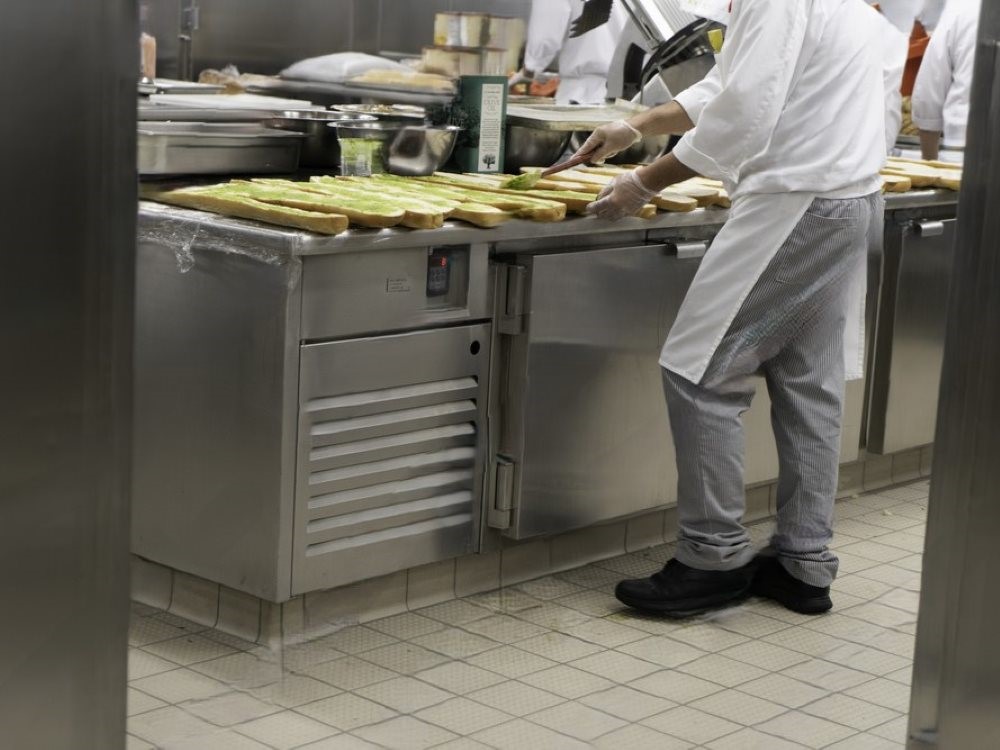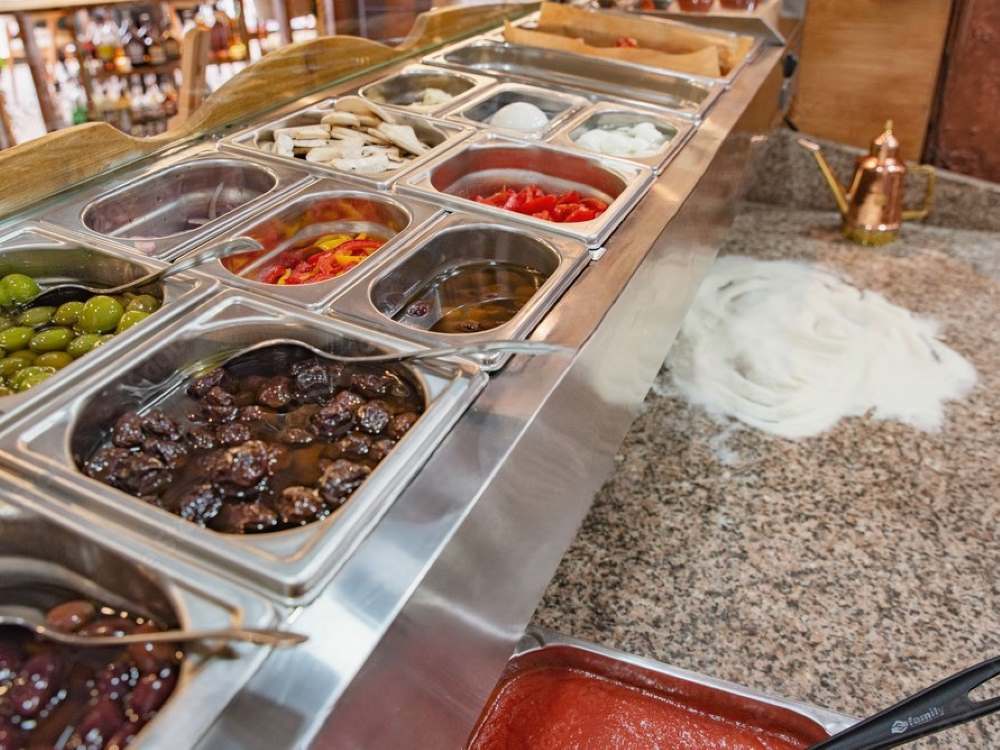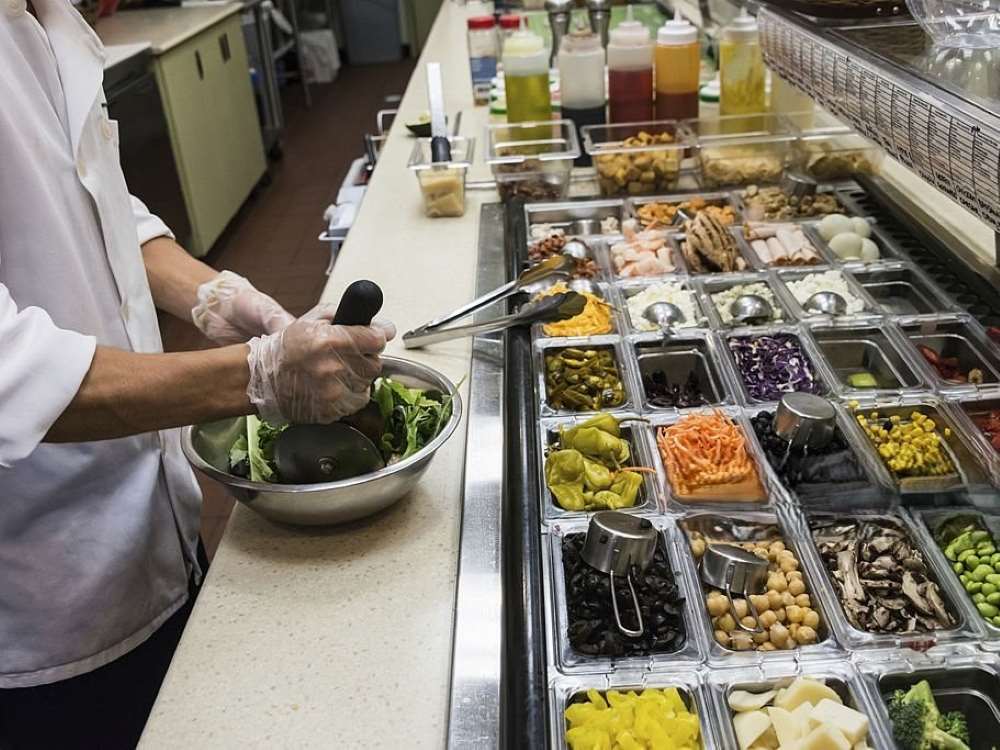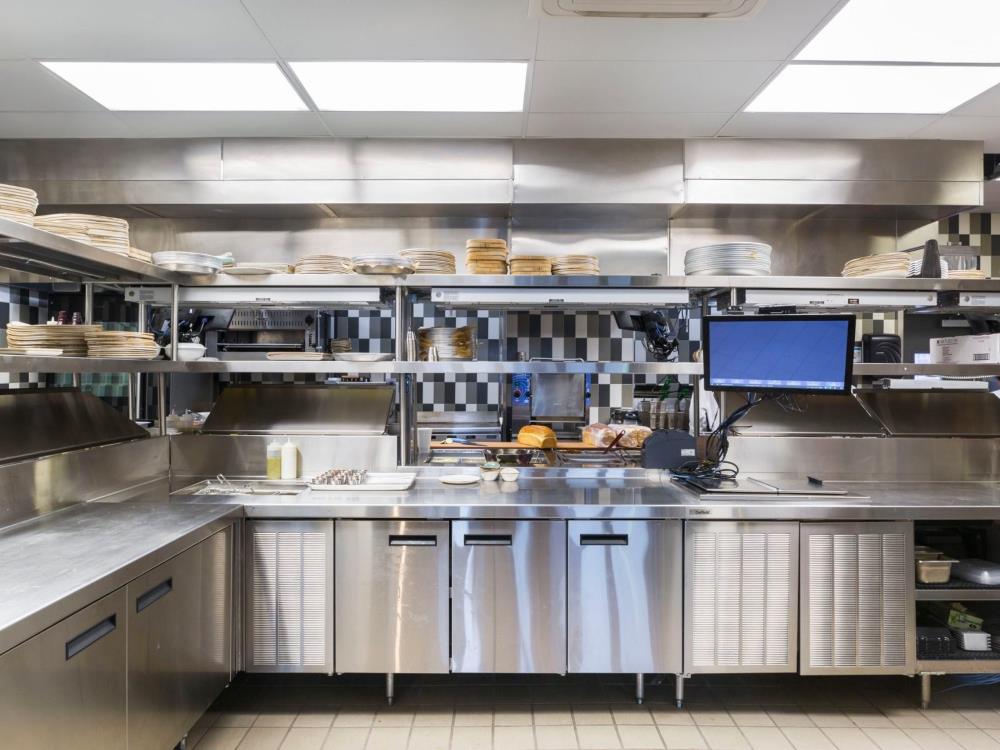A well-organized kitchen is the backbone of any successful culinary operation. One of the most essential pieces of equipment for maintaining efficiency and hygiene in your kitchen is the refrigerated prep table. These versatile units combine food preparation surfaces with refrigeration, ensuring ingredients stay fresh and within reach. Let’s delve into the different types, sizes, access types, compressor types, and refrigeration types of these indispensable kitchen tools.
Types of Refrigerated Prep Tables
Refrigerated prep tables come in various types, each designed to meet specific needs in the kitchen.
Standard Prep Tables
The typical prep table has a sturdy stainless steel top and a place to keep perishable foods in the fridge. Their long lifespan, low maintenance, and simplicity make them ideal for everyday usage in the kitchen. Everyday duties are made easier with these stainless steel tables, which can handle a range of culinary products.

Pizza Prep Tables
Pizza dough and toppings can be more easily stored and prepared on pizza prep tables because of their greater surface. To keep condiments neat and within reach, they frequently feature ingredient railings. These tables greatly enhance the efficiency of pizza preparation, particularly during peak periods.

Sandwich/Salad Prep Tables
Sandwich and salad prep tables are designed for the quick and efficient assembly of sandwiches and salads. They usually feature multiple compartments for ingredients and a cutting board surface for preparation. These tables are perfect for delis and fast-casual restaurants.

Sizes of Refrigerated Prep Tables
The size of your prep table should align with the kitchen space and operational needs.
Small Tables
Small tables are ideal for compact kitchens or as additional prep stations. They typically measure between 27 to 48 inches in width. These tables are perfect for kitchens with limited space but still require efficient prep areas.
Medium Tables
Medium-sized tables range from 49 to 72 inches. They offer a balance of ample prep space and storage capacity without overwhelming the kitchen. These tables are versatile and suitable for most kitchen setups.
Large Tables
Large prep tables, spanning 73 inches and above, are suited for high-volume kitchens. They provide extensive prep and storage space, making them perfect for busy environments. These tables are ideal for large-scale food preparation.
Access Types
The way you access the refrigerated section of your prep table can affect workflow and efficiency.
Door Access
Tables with door access feature hinged doors that open to reveal storage compartments. They are straightforward and offer easy access to ingredients. This type of access is common and user-friendly.
Drawer Access
Drawer access tables come with pull-out drawers, allowing quick retrieval of items. They are ideal for kitchens that require frequent access to stored ingredients. Drawers help keep everything organized and within reach.
Combination Access
Combination access tables offer both doors and drawers, providing versatile storage options. They are perfect for kitchens needing a mix of storage solutions. This type offers the best of both worlds.
Compressor Types
The compressor is the heart of your refrigerated prep table, determining its cooling efficiency and placement.
Top-Mounted Compressors
Top-mounted compressors are located on the top of the unit, keeping them away from floor dust and debris. They are more accessible for maintenance but may require more vertical space. These compressors are ideal for cleaner kitchen environments.
Bottom-Mounted Compressors
Bottom-mounted compressors are situated at the base of the table. They are easier to reach for cleaning and maintenance and help with better air circulation in hot kitchens. These compressors are great for high-heat kitchens.
Refrigeration Types
The type of refrigeration system impacts the table’s efficiency and consistency in temperature control.
Air-Cooled Systems
Air-cooled systems use fans to circulate air and maintain a consistent temperature. They are energy-efficient and easy to maintain. These systems are commonly used in most commercial kitchens.
Cold Wall Systems
Cold wall systems have refrigerant lines running through the walls of the unit. They provide uniform cooling but may be more challenging to service. These systems are less common but offer excellent temperature control.
Conclusion
A professional kitchen would be incomplete without refrigerated prep tables. Different kinds, sizes, and combinations are available to accommodate a wide range of requirements. Size, kind, refrigeration system, access method, and compressor type are some factors to think about while selecting the correct table. Discover the game-changing impact on your culinary operations when you outfit your kitchen with the ideal refrigerator prep table.
